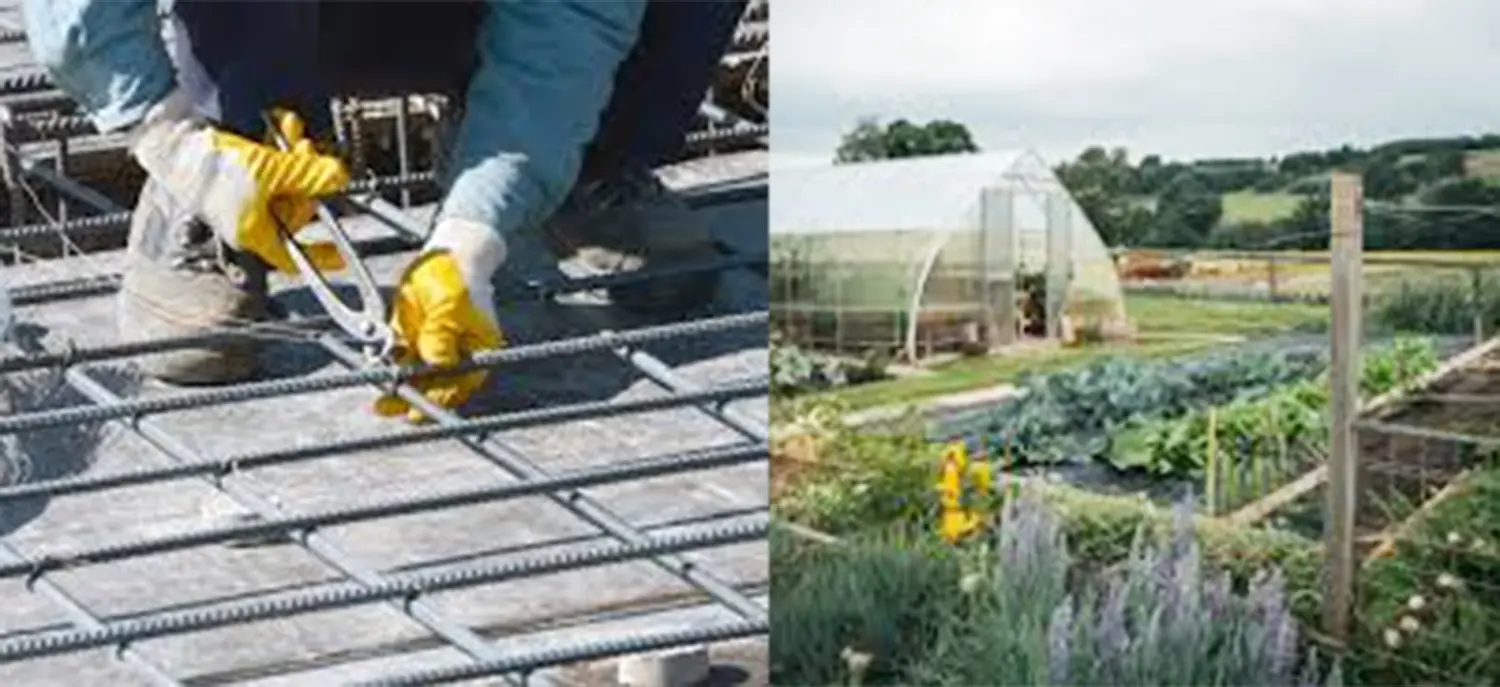Galvanized Binding Wire Solution
Construction Field
For Reinforcing Bar Tying: Select the appropriate (specification) of galvanized binding wire. Commonly used ones are No. 18 - 22 wires. When tying, wind the wire around the intersection points of two or more reinforcing bars for fixation. Ensure that each intersection point is tied firmly to prevent the reinforcing bars from shifting during processes such as concrete pouring, thus guaranteeing the stability of the building structure. For example, when constructing the frame structure of a high - rise building, a large amount of galvanized binding wire is needed to tie the reinforcing bars of columns, beams, slabs, etc.
For Steel Wire Mesh Installation: First, prepare materials and tools such as galvanized steel wire mesh, wire cutter, and galvanized iron wire. Cut the steel wire mesh into an appropriate size with a wire cutter according to the size of the construction area. Then, use galvanized iron wire to fix the steel wire mesh onto the pre - installed fixed brackets, ensuring that the steel wire mesh is flat and firm. This method is often used in construction projects such as exterior wall insulation and crack prevention.

Agricultural Field
For Plant Tying: For different crops or flowers, select galvanized binding wire with a suitable diameter. A wire with a diameter of 1.2mm is relatively common. Fix one end of the wire to the plant support or a nearby fixed object, and then gently wind the wire around the stem of the plant to help the plant grow upright and prevent lodging. When planting vine - like plants such as tomatoes and cucumbers, galvanized binding wire is often used to fix the plants.
For Fence Building: Determine the height and length of the fence according to requirements. Select the appropriate specification of galvanized wire. First, fix one end of the wire to the upright post, and then tighten the wire through a tensioning device. Fix the wire to the upright post at certain intervals to form a fence structure. This can be used to enclose farmland, pastures, etc., to prevent animals from entering or escaping.
Industrial Packaging Field
For Product Bundling: According to the size, weight, and shape of the product to be bundled, select galvanized binding wire with sufficient strength and flexibility. Wind the wire around the product, and then fix the wire tightly by knotting or using special bundling tools to ensure that the product does not come apart or move during transportation and storage. For example, products such as pipes and wires are bundled and packaged in this way.
For Pallet Reinforcement: After placing the goods on the pallet, use galvanized binding wire to fix the goods to the pallet. Pass the wire through the bottom of the pallet and then cross - tie it around the goods to make the goods and the pallet an integral whole, increasing stability and facilitating forklift handling and transportation.
Chain link fence solutions vary in different fields. Some common ones are as follows:
Construction Field
Site Enclosure: Set up a chain link fence around the construction site. First, determine the layout and dig holes for the posts according to the site size and shape. Then, install the posts firmly and connect them with top rails. Next, unroll the chain link fabric and attach it to the posts and rails using tension bands and tie wire. This can prevent unauthorized entry, protect the safety of construction personnel and the public, and isolate the construction area from the outside.
Material Storage Area Partition: Use chain link fences to divide different material storage areas on the construction site. This helps to classify and manage construction materials such as steel bars, cement, and building components, making it convenient to find and use materials, and improving construction efficiency.
Agricultural Field
Farm Perimeter Fencing: Measure the perimeter of the farm and select chain link fences of appropriate height and mesh size. Usually, a height of 4 - 6 feet is sufficient for general use. Install posts at certain intervals along the perimeter, and then attach the chain link fabric to the posts. This can prevent wild animals from entering the farm to damage crops and also keep livestock within a certain range, facilitating management.
Animal Pen Partition: In farms that raise livestock or poultry, chain link fences can be used to divide different animal pens. For example, in a pig farm, separate pens can be created for sows, piglets, and fattening pigs to facilitate feeding, management, and disease prevention.
Industrial Field
Factory Perimeter Protection: Similar to the construction site enclosure, install chain link fences around the factory area. The difference is that the factory may have higher requirements for security. Barbed wire or anti - climbing devices can be added on top of the fence to enhance security and prevent unauthorized personnel from entering the factory area to ensure the safety of personnel and property.
Warehouse Area Partition: Use chain link fences to divide different functional areas in the warehouse, such as the storage area, sorting area, and loading and unloading area. This can improve the space utilization rate of the warehouse, make the warehouse management more orderly, and facilitate the handling and storage of goods.
